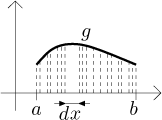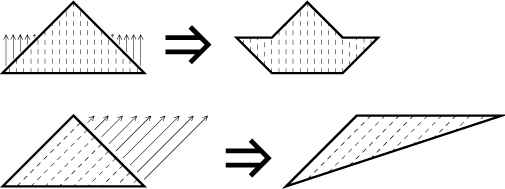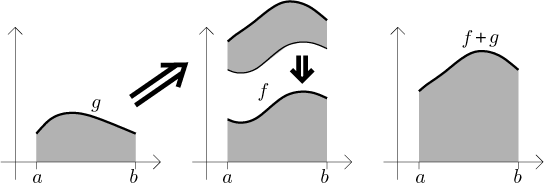
Consider two functions f and g defined on a closed interval

Now we should relate this resulting region to regions under the graphs of f and g themselves. Look at the graph of g:

As we saw before, we can imagine that this region consists of infinitely many thin vertical strips of thickness dx. If we start moving these strips up and down, the resulting area should not change. This is a general principle, we can decompose any region into thin strips and manipulate them - as long as they are all in the same direction and we also move them in this direction - without changing the area. For instance, all figures in the following picture have the same area:

In fact, one can also imagine that a given solid consists of infinitely many thin parallel tubes and move them up and down without changing volume, this is often used when deriving all kinds of formulas.
Having accepted this, we now look at the region under the graph of g, decompose it into vertical strips and move them up in such a way that the new bottom contour of the region has exactly the shape of the graph of f:

Then we move this region up and put it down on the top of the graph of f. Now the addition formula seems clear.

In fact, having accepted the dx idea, we can even get this
algebraically. Pick some x and consider the corresponding vertical
strip at that point, dx wide and going up to the graph of

Of course we were cheating a lot, but it seems easier to understand this way.